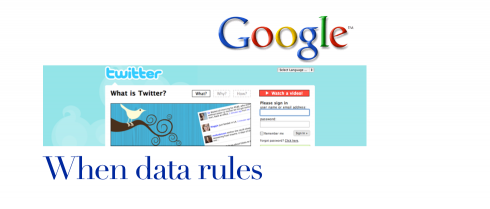
Focus groups.
I think I have sat through more of them than I probably have sat through movies at a cinema, at the circus, or at the theater for a live performance. No matter where one goes, a focus group is scheduled soon after the first prototypes of a design model are completed. In my almost 40-year career I have seen focus groups in 86 countries, six continents.
Yes, I know that focus groups can save you from making mistakes. They have helped me there. However, a lot of what happens in a focus group is this: consumers are presented with pages of what the newspaper/website could be like.
The group responds. One person in the group assumes the role of leader, and talks thru the entire session; a second person echoes what this person says, then the choir joins. If the leader has said: Too much white space at the top of Page One, you are doomed. Take the white space out, because the publisher and editor behind the window to the focus group are already saying: I told you so, Mario, we need to go easier on the white space.
Does it matter that this person in the audience could be a mechanic specializing in Volkswagen repairs and would not know white space from dark holes ?
Consumers come to focus groups with a sense of what is familiar to them; we present them with something new, which would take time to assimilate and to accept, but they are expected to make decisions in a matter of 45 minutes. Sometimes those decisions affect the very goals and core of a project. The smartest editors and publishers I have known have made intelligent conclusions from focus groups, but have given good ideas a chance to grow. It is less fortunate when the focus groups rules the decision making process. Many a project’s best offerings have succumbed to the whims of a focus group.
Google and focus groups
So, it is no surprise that I am smiling as I read a New York Times article (Sunday, May 10) titled “Data, Not Design, Is King in the Age of Google”.
Profiled in the article, Douglas Bowman, a former top visual designer at Google—-now with Twitter-—who, in a rather candid interview, said exactly what many of us already knew from our own experiences: in Google’s engineering-driven culture, data trumps everything else.
Poor Mr. Bowman, he confesses that when he would come up with a design decision, no matter how minute, he would be asked to back it up with data.
Data eventually becomes a crutch for every decision, paralyzing the company and preventing it from making any daring design decisions.
Can I join the choir in saying: Amen!?
Mr. Bowman has found a more fertile and encouraging environment for experimentation with Twitter, where he is now the head visual designer.
Ironically, says Mr. Bowman, they do listen to what the users are saying at Twitter, except that it comes, not in the way of focus groups, but through Tweets in 140 characters or less.
Makes me think of all the time I could have saved from sitting through the most boring focus groups, not to mention the many ideas that would have taken seed, had they not been killed instantly by some fool with enthusiasm who happened to command center stage and gain 45 minutes of fame during a focus group—-with an audience clinging to his every word.
Not all is lost, however, with attending focus groups. It is mostly comedy, until you see your one favorite idea killed, then it is a bit of a Greek tragedy. I have made notes over the years thinking that perhaps a sitcom based on focus groups dynamics is waiting to be done.
A designer chimes in on focus groups
Hi Mario,
Great post! I’ve really enjoyed reading it. On this subject I wrote a text a few months ago that I think I’ve sent you. It was about ‘opening’ up a redesign to your readers in order to have a much larger focus group, to have your readers engaged from the beginning with the change to come. But also to maintain total control from ‘our’ side on the design main rules.
Do you remember it? I though that it might go in the same direction as your post today goes and the ‘trend’ of using crowd source to solve your problems. The idea is that 7 or 8 guys might be wrong but 7000 or 8000 have a larger probability of being right.
As always thank you so much for your thoughts
My best regards
Pedro Monteiro
www.whatype.wordpress.com
Follow the Marios

Two Marios. Two Views.
Follow Mario Jr. and his blog about media analysis, web design and assorted topics related to the current state of our industry.
http://garciainteractive.com/
Visit Mario Sr. daily here, or through TweetsByDesign (www.twitter.com/tweetsbydesign)/
TheMarioBlog posting #258